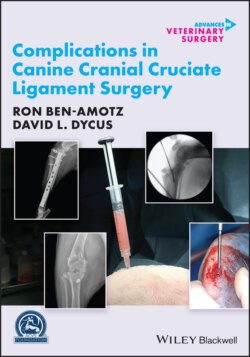Читать книгу Complications in Canine Cranial Cruciate Ligament Surgery - Ron Ben-Amotz - Страница 31
2.4.2 Anesthesia and Surgery Time
ОглавлениеBoth prolonged anesthesia and surgery times have been associated with increased SSI rates [2, 5, 9, 14, 16, 40, 41]. The risk for SSI has been reported to increase between 0.5% and 4% per minute of anesthesia and 7% per minute of surgery [5, 9, 16]. Theories that lead to this increased SSI rate have included hypotension, hypothermia, and tissue hypoxia but no correlation has been made between these factors [5]. One study that correlated prolonged anesthesia and surgery times with the development of SSI also identified that with prolonged anesthesia and surgery times, more antimicrobial resistance developed [14].
Reducing anesthesia and surgery times requires a concerted effort between members of the surgical team, anesthetists, and diagnostic imaging. Ensuring all equipment is available and all involved personnel are prepared before inducing anesthesia may aid in efficiency and therefore reduce anesthesia and surgery times. In an academic setting where student teaching occurs, it may not be possible to reduce these times, especially when novice surgeons (i.e., surgical interns and residents) are performing portions of the surgical procedure. For animals with known inherent risk factors for SSI, reducing these times may aid in lowering their SSI risk. Introducing surgical checklists (Figure 2.6) is one way to improve communication between the surgery and anesthesia team and reduce complications that can lead to increased patient morbidity and mortality [66, 67].
